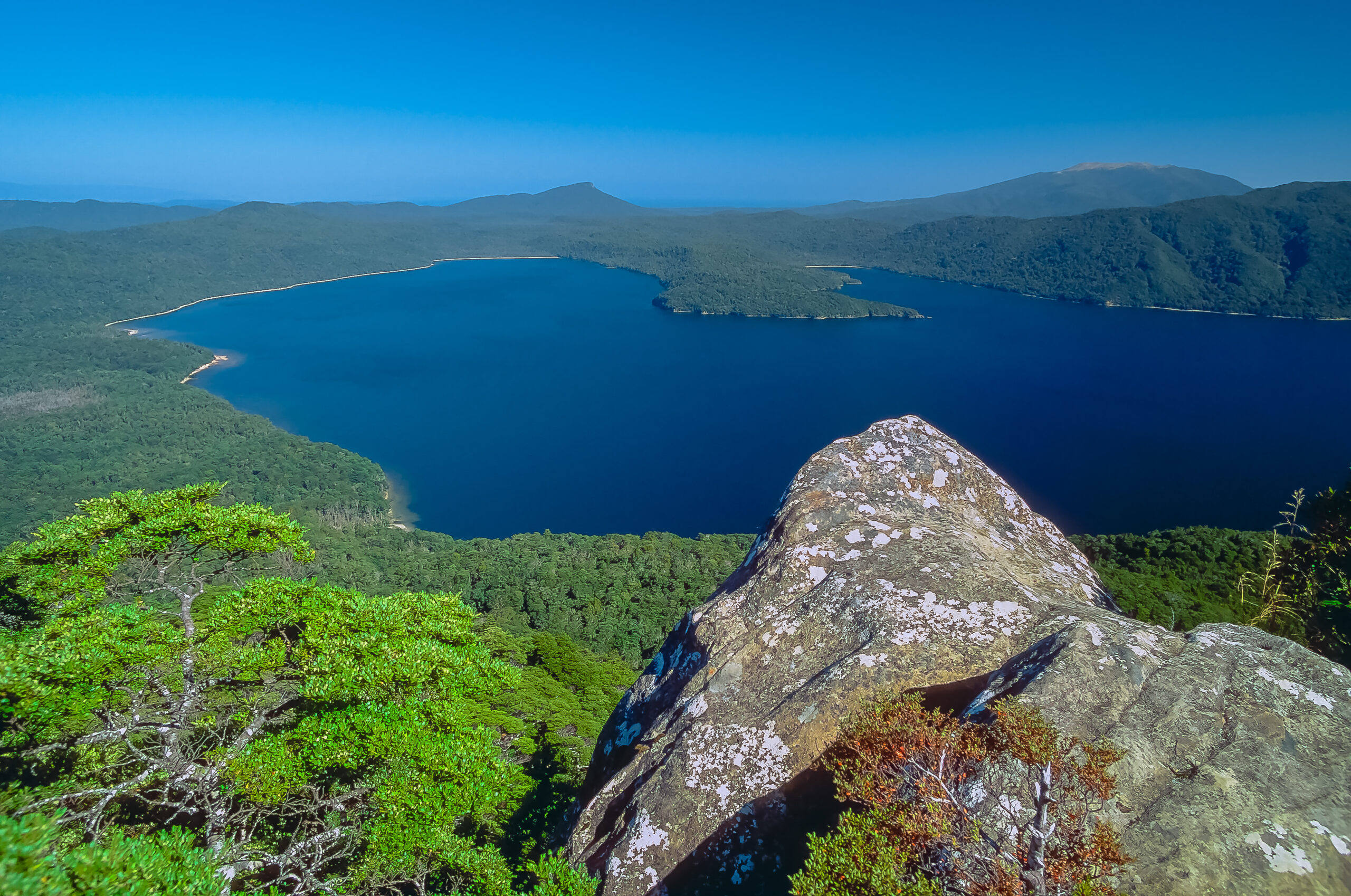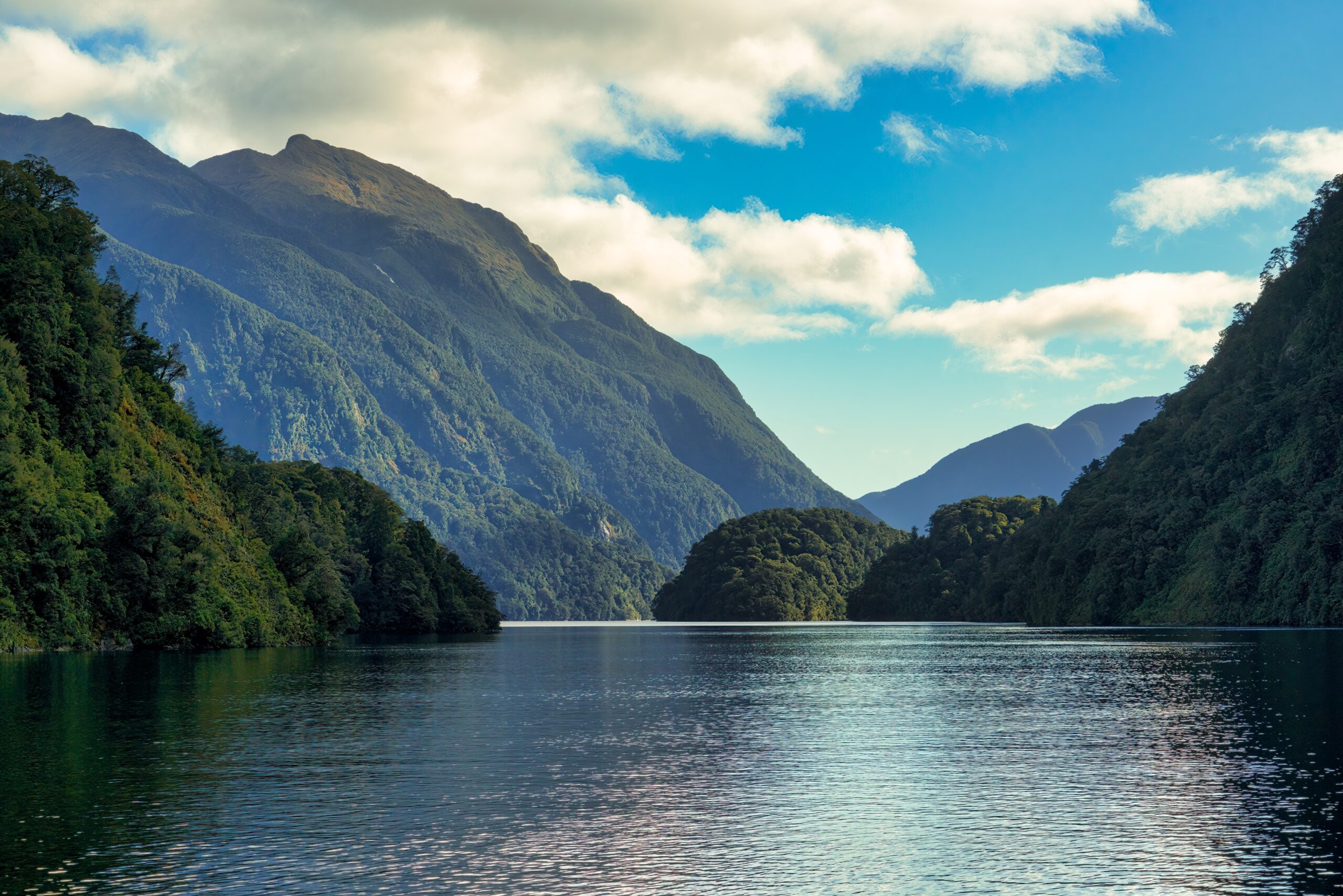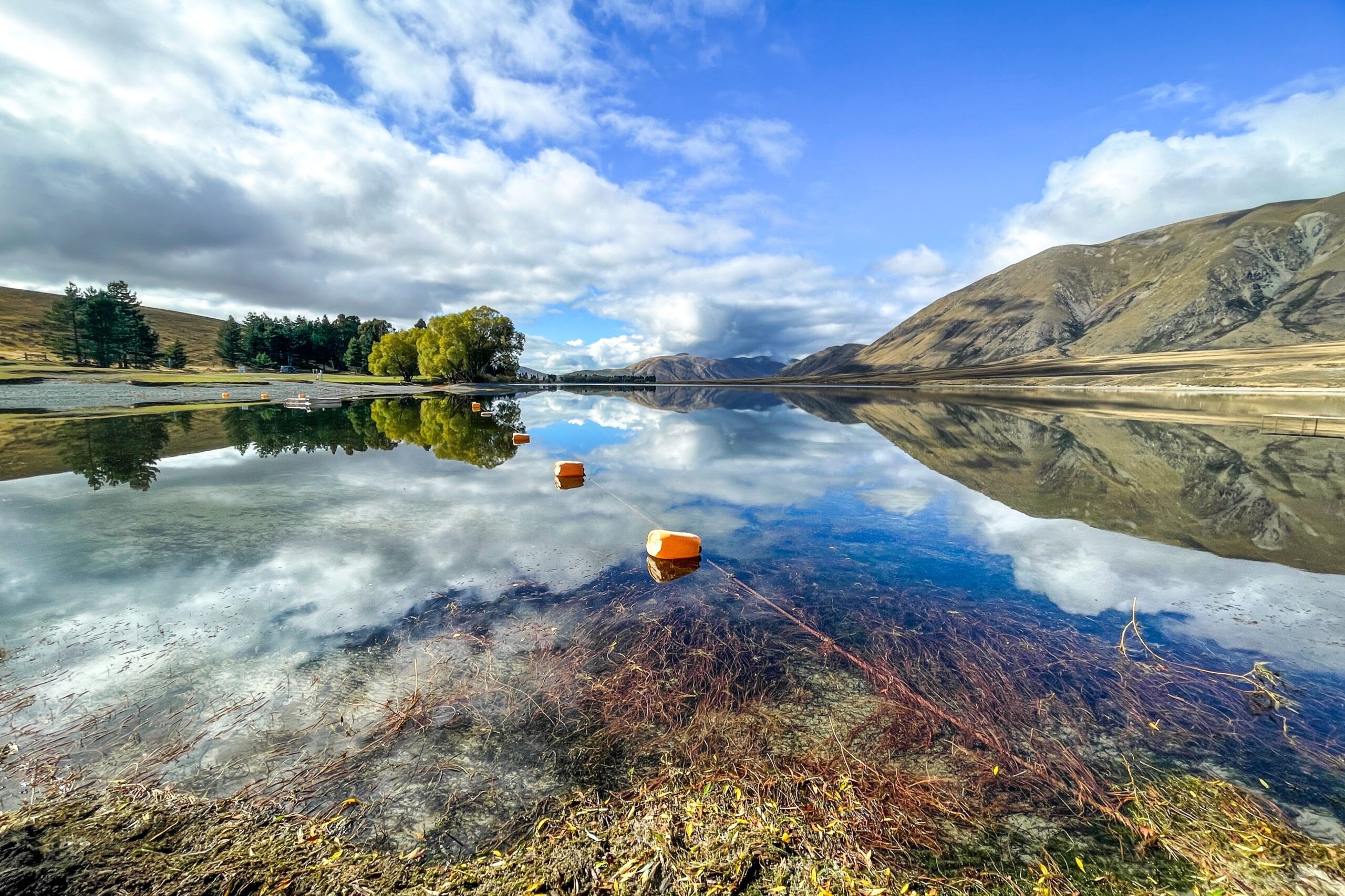New Zealand’s South Island is renowned for its breathtaking landscapes and popular tourist spots, but hidden within its vast wilderness are destinations that remain largely undiscovered. These off-the-beaten-path locations offer a more tranquil and authentic experience, away from the usual crowds. From remote lakes and secluded beaches to unspoiled mountains and secret hot springs, the South Island is home to some of the most stunning and lesser-known places in the country. Whether you’re an adventure seeker or simply looking to explore the untouched beauty of New Zealand, these 15 undiscovered destinations will take you on a journey to the heart of the island’s natural wonders.
Earnslaw Burn

Earnslaw Burn is one of the South Island’s hidden treasures, offering a remote and awe-inspiring experience. Located near Glenorchy, this destination features a striking landscape where waterfalls cascade down the face of a glacier, creating an otherworldly atmosphere. The location’s untouched beauty and secluded nature make it a true hidden gem. Few travelers venture to this spot, as it requires a somewhat challenging hike, but those who do are rewarded with views that are nothing short of cinematic. Earnslaw Burn also gained fame as a filming location for The Hobbit, making it even more alluring to those in the know. However, its relative obscurity compared to more famous sites like Milford Sound ensures it remains one of the South Island’s most undiscovered destinations, perfect for those seeking solitude amidst New Zealand’s dramatic landscapes.
Lake Hauroko

Tucked away deep within Fiordland National Park, Lake Hauroko is New Zealand’s deepest lake and a true haven for nature enthusiasts seeking isolation. This remote lake is often overlooked in favor of the more accessible Milford Sound, but its sheer depth and the surrounding pristine wilderness offer a tranquil escape from the crowds. Surrounded by towering peaks and dense forests, Lake Hauroko is accessible only via a challenging drive followed by a rugged trek, which deters most casual tourists. The lake’s clear, dark waters, combined with the near-total silence of its surroundings, create an eerie, almost mystical atmosphere. For those willing to make the journey, Lake Hauroko offers a unique experience that feels like stepping into an untouched, primeval world, making it one of the South Island’s most undiscovered and rewarding destinations.
Clay Cliffs

The Clay Cliffs of Omarama are one of the South Island’s most striking geological formations, yet they remain surprisingly under-visited. These towering, sharp pinnacles and ridges, formed by erosion over millions of years, create an almost alien landscape that contrasts sharply with the surrounding farmlands. Located in the Waitaki Valley, the Clay Cliffs are accessible via a short detour from the main highway, but their remote location means they are often missed by those traveling through the region. The cliffs’ unique appearance, with their jagged spires and deep ravines, makes them a photographer’s dream, yet their relative obscurity means you can often explore them in solitude. The combination of their dramatic appearance and lack of crowds makes the Clay Cliffs a quintessential undiscovered destination in the South Island.
Curio Bay

Curio Bay, located in the Catlins region, is a remarkable destination that remains largely off the beaten path despite its unique attractions. The bay is home to a fossilized forest that dates back around 180 million years, a rare geological phenomenon where tree stumps and logs are perfectly preserved in rock, visible at low tide. This natural wonder alone would make Curio Bay worth visiting, but the area also offers a chance to see rare Hector’s dolphins and yellow-eyed penguins in their natural habitat. Despite these draws, Curio Bay remains relatively undiscovered, perhaps due to its remote location and the fact that it requires a deliberate detour from more popular tourist routes. For those who do make the journey, Curio Bay offers a serene and timeless experience, far from the crowds, where ancient history and living nature come together in one of the South Island’s most untouched corners.
Lake Manapouri

Often overshadowed by the famous Milford Sound, Lake Manapouri in Fiordland National Park is a tranquil retreat that offers unparalleled natural beauty without the crowds. The lake is dotted with 35 islands and surrounded by lush rainforest, creating a stunningly picturesque setting. Unlike the more popular lakes in the region, Lake Manapouri remains relatively quiet, making it an ideal destination for those seeking peace and solitude. It’s also the gateway to the lesser-known Doubtful Sound, which is accessible only by crossing the lake. The journey across Lake Manapouri, followed by a trip through the wilderness to Doubtful Sound, is an adventure in itself, offering a deeper connection with the untamed landscapes of Fiordland. The lake’s serene waters, combined with its remote location, ensure that it remains one of the South Island’s most undiscovered and enchanting destinations.
Mavora Lakes

Mavora Lakes, located between Lake Te Anau and Lake Wakatipu, offers a quintessential South Island wilderness experience that remains off the radar for most tourists. The area consists of two main lakes, North Mavora and South Mavora, set against a backdrop of towering mountains and dense native forests. The lakes are a popular spot for camping, fishing, and hiking, but their remote location means they see far fewer visitors than other parts of Fiordland. The Mavora Lakes also have a special place in cinematic history, as they were used as a filming location for The Lord of the Rings films, adding an extra layer of allure for fans of the trilogy. Despite this, the area remains largely undiscovered, offering a serene and untouched natural environment where you can truly disconnect from the modern world.
Farewell Spit

Farewell Spit, the South Island’s northernmost tip, is a long, narrow sand spit that extends into the Tasman Sea, creating one of New Zealand’s most unique landscapes. Despite its striking beauty and ecological significance, Farewell Spit remains one of the island’s lesser-visited destinations, likely due to its remote location in Golden Bay. The spit is a haven for birdlife, including gannets and migratory shorebirds, and features dramatic sand dunes that stretch for miles. The old lighthouse at the end of the spit adds a touch of history to the landscape, and the expansive sand dunes create a feeling of isolation that is hard to find elsewhere. Access to Farewell Spit is restricted to guided tours, which further limits the number of visitors, ensuring that this extraordinary place remains a peaceful and relatively undiscovered corner of the South Island.
Welcome Flat Hot Pools

Nestled within the rugged wilderness of Glacier Country, the Welcome Flat Hot Pools offer a soothing escape after a long trek through the mountains. These natural hot pools are located along the Copland Track, about a seven-hour walk from the nearest car park, making them accessible only to those willing to put in the effort. The journey to the pools is part of the adventure, taking you through lush rainforests, across suspension bridges, and along river valleys before you reach the secluded hot springs. The pools themselves are set in a picturesque valley, surrounded by towering peaks, offering a perfect spot to relax and soak in the thermal waters while enjoying the stunning alpine scenery. The challenging access and remote location ensure that the Welcome Flat Hot Pools remain one of the South Island’s most undiscovered and tranquil destinations.
Doubtful Sound

Doubtful Sound, often referred to as the “Sound of Silence,” is one of the most remote and unspoiled fiords in Fiordland National Park. Unlike the more famous Milford Sound, which is accessible by road, Doubtful Sound can only be reached by crossing Lake Manapouri and then taking a boat or bus through dense rainforest. This limited access has kept Doubtful Sound relatively untouched by mass tourism, preserving its pristine beauty and tranquil atmosphere. The sound itself is much longer and deeper than Milford, with towering cliffs, cascading waterfalls, and an abundance of wildlife, including dolphins, seals, and penguins. The sheer scale and remote location of Doubtful Sound create an overwhelming sense of isolation, making it a truly undiscovered gem for those seeking to experience the wild, untamed beauty of New Zealand’s South Island.
Mount Sunday

Mount Sunday, a relatively small hill in the expansive landscape of the Canterbury Plains, offers an experience that far exceeds its modest elevation. This remote location gained fame as the filming site for Edoras, the capital of Rohan in The Lord of the Rings films, yet it remains surprisingly undiscovered by the majority of tourists. The journey to Mount Sunday involves a drive through the Hakatere Conservation Park, followed by a short hike that rewards visitors with panoramic views of the surrounding rivers, plains, and mountains. The area’s untouched beauty, combined with its cinematic history, makes Mount Sunday a hidden gem that offers both natural and cultural significance. Its relative isolation and the effort required to reach it ensure that it remains one of the South Island’s most undiscovered and serene locations.
Te Waikoropupu Springs

Te Waikoropupu Springs, also known simply as Pupu Springs, is a hidden treasure located in Golden Bay. Renowned for having some of the clearest spring water in the world, these springs are a sacred site for the Māori people, adding a layer of cultural significance to their natural beauty. The springs are surrounded by lush native bush and are fed by an underground aquifer that filters the water to near-perfect clarity. Despite their remarkable qualities, Te Waikoropupu Springs remain relatively unknown to many visitors, perhaps due to their remote location in the northern reaches of the South Island. The serene atmosphere and the spiritual importance of the springs create a unique experience that feels far removed from the more commercialized tourist sites, making it one of the South Island’s most undiscovered and spiritually enriching destinations.
Ashburton Lakes

The Ashburton Lakes, located in the heart of the Canterbury region, offer a peaceful escape into a landscape of pristine lakes and rugged mountains. This collection of small lakes is less frequented than the more famous lakes in the region, providing a serene environment for hiking, biking, and photography. The area is known for its stunning reflections of the surrounding peaks on the calm waters, making it a dream destination for landscape photographers. Despite its beauty, the Ashburton Lakes remain relatively undiscovered, likely due to their remote location and the fact that they require a bit more effort to reach. For those willing to venture off the beaten path, the Ashburton Lakes offer a tranquil and visually stunning retreat in one of the South Island’s most untouched corners.
Karamea

Karamea, situated on the West Coast of the South Island, is a remote wilderness area that serves as the gateway to the Kahurangi National Park. This small, isolated town is surrounded by lush rainforests, dramatic coastlines, and some of New Zealand’s most beautiful walks, including the famous Heaphy Track. Despite these attractions, Karamea remains relatively unknown, even among seasoned travelers, likely due to its remote location and the long, winding road required to reach it. The town itself is charmingly laid-back, with a strong community spirit and a focus on sustainability. For those who do make the journey, Karamea offers a perfect base for exploring the wild, untamed landscapes of the West Coast, far from the hustle and bustle of more popular tourist destinations.
Stewart Island

Stewart Island, New Zealand’s third-largest island, is often overlooked in favor of the North and South Islands, making it one of the country’s most undiscovered destinations. Located off the southern tip of the South Island, Stewart Island is a haven for wildlife enthusiasts, with its dense forests, secluded beaches, and abundant birdlife, including the rare kiwi. The island’s remote location and limited access—most visitors arrive by ferry from Bluff or by small plane—ensure that it remains a peaceful retreat, far from the crowds. The island’s isolation has also allowed it to maintain a unique, untouched charm, with much of the island protected as part of Rakiura National Park. For those willing to venture off the beaten path, Stewart Island offers a rare opportunity to experience New Zealand as it once was: wild, remote, and full of natural beauty.
Lake Gunn

Lake Gunn, located in Fiordland National Park, is often overlooked by travelers on their way to the more famous Milford Sound. This small, glacial lake is set against a backdrop of steep mountains and dense forests, offering a tranquil setting that is quintessentially Fiordland. Despite its proximity to the main tourist route, Lake Gunn remains largely undiscovered, providing a peaceful alternative to the more crowded destinations in the area. The lake’s serene waters and surrounding nature trails make it an ideal spot for a quiet picnic or a reflective walk. For those looking to escape the hustle of Milford Sound, Lake Gunn offers a slice of untouched Fiordland beauty, where the only sounds are the rustling of leaves and the calls of native birds.
This article originally appeared on Rarest.org.
More from Rarest.org
Vintage military medals hold a unique place in history, representing acts of bravery, sacrifice, and distinguished service. Read more.



